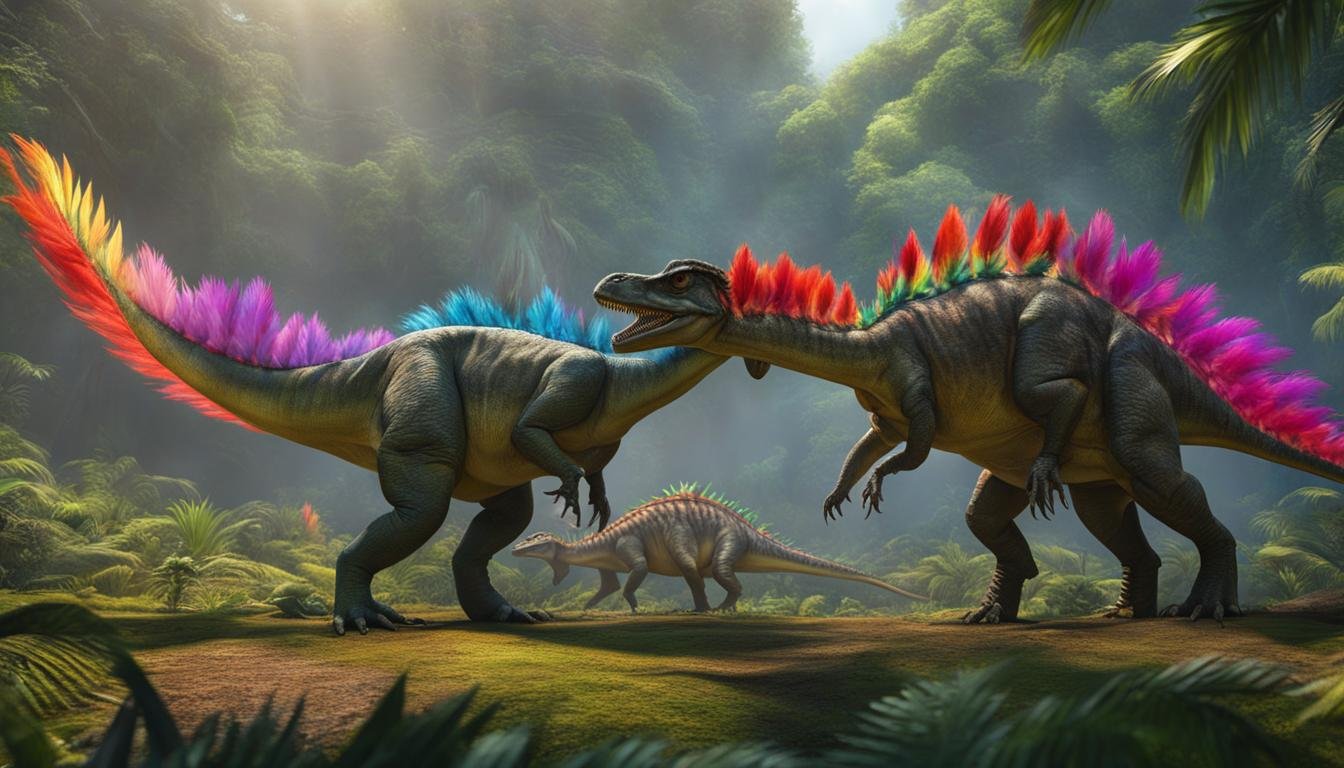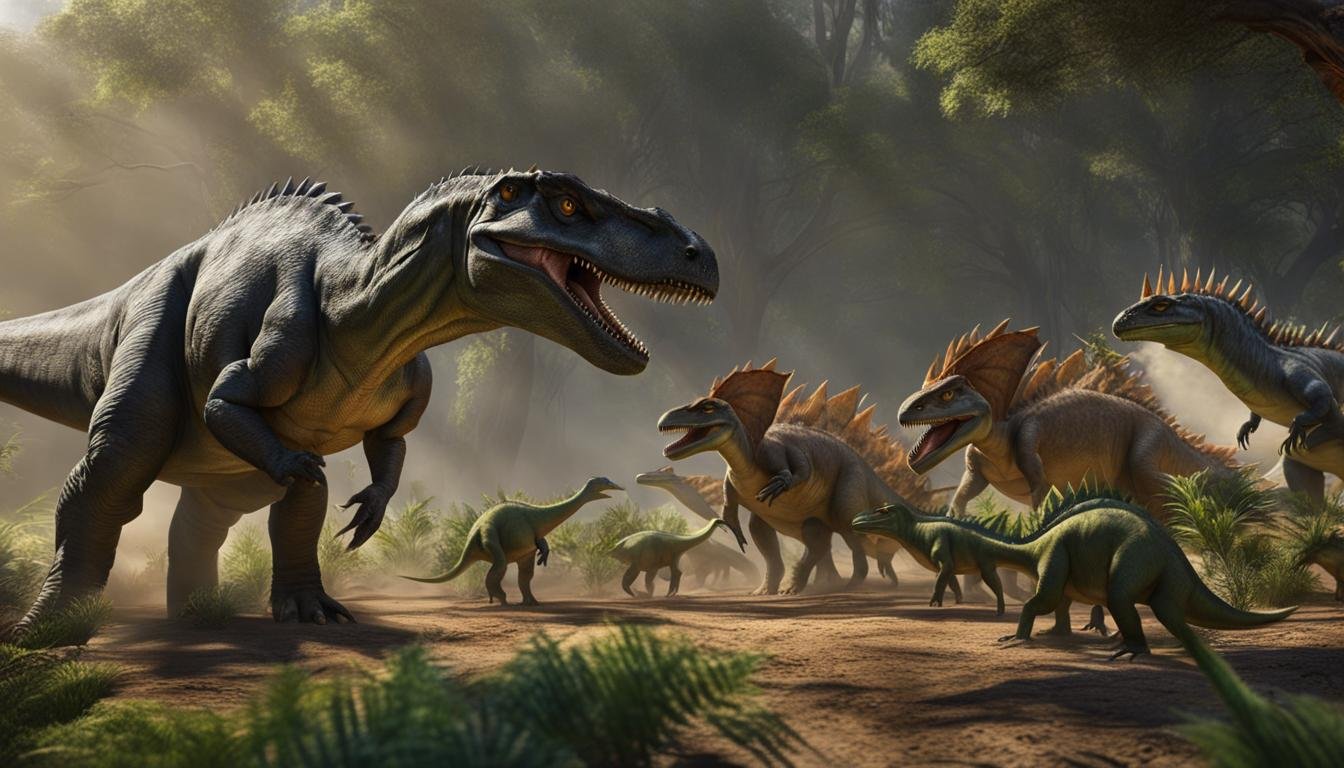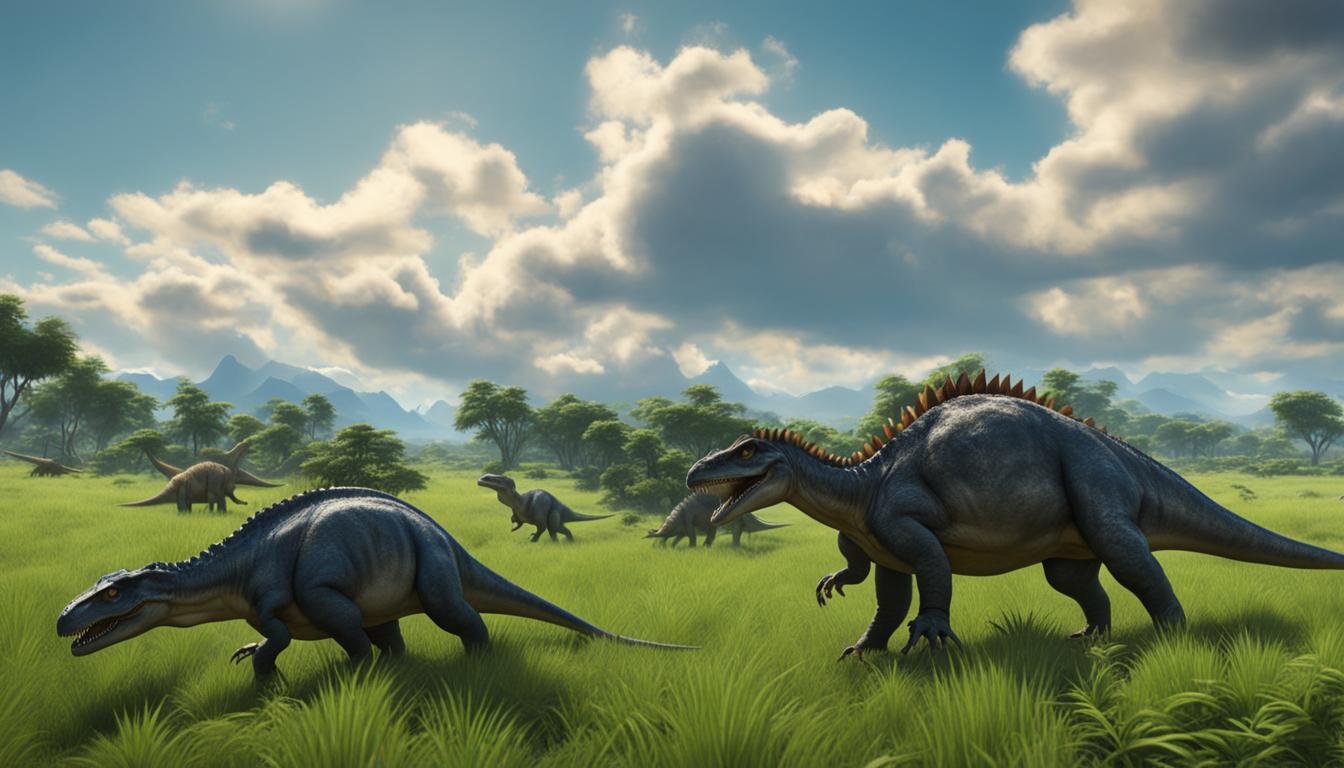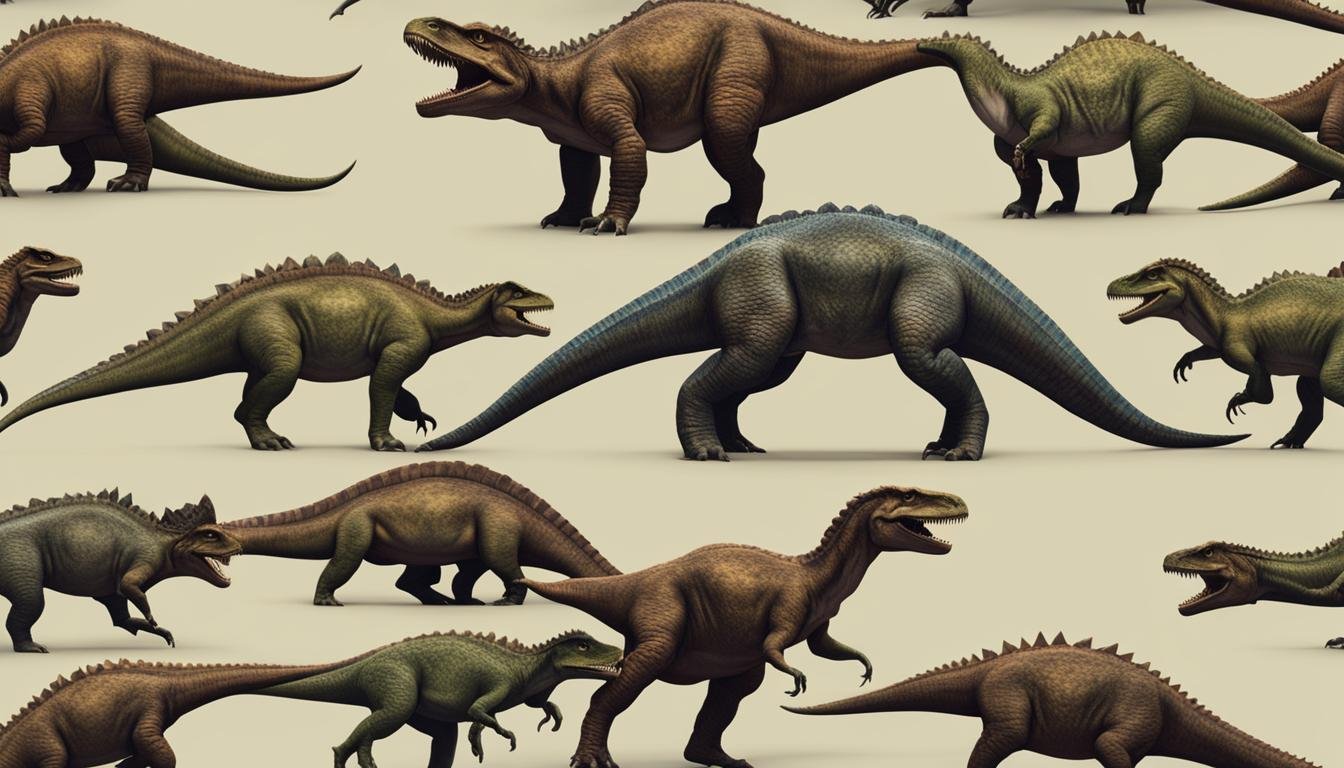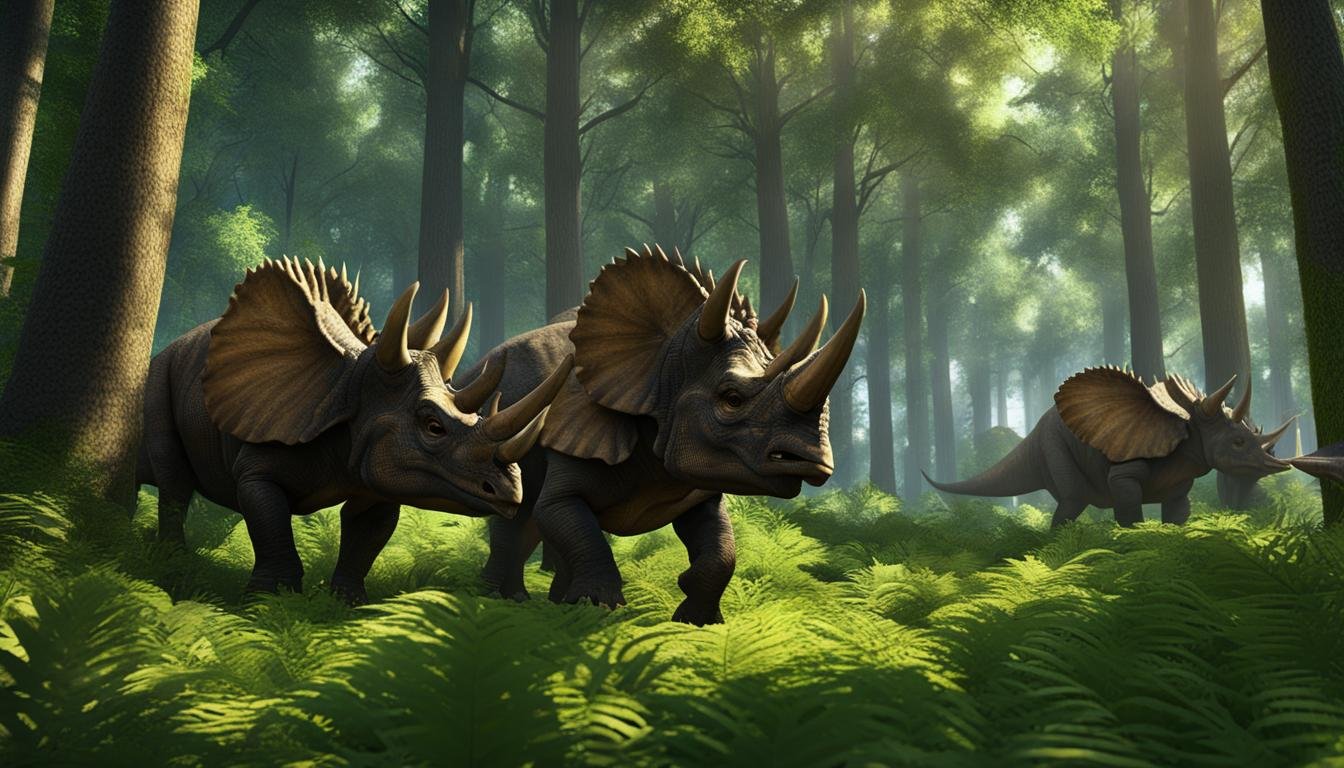The fascinating world of dinosaurs never ceases to amaze us. From their massive size to their fierce predators, there is still so much we don’t know about these ancient creatures. One area of particular interest is their mating rituals and courtship behaviors. Through fossil evidence and paleobiological studies, researchers have begun to uncover the secrets of how dinosaurs attracted mates and formed relationships.
| Key Takeaway | Detail |
|---|---|
| Mating Rituals | Dinosaurs engaged in mating rituals that were similar to those of modern birds. |
| Scrape Displays | Male dinosaurs used scrape displays as a method to attract mates, showing a complex behavior in courtship. |
| Trace Fossils Insights | Trace fossils have provided valuable insights into the behavior and courtship strategies of dinosaurs. |
| Courtship Vocalizations and Displays | Dinosaurs likely used vocalizations and visual displays as part of their courtship rituals, akin to modern birds. |
| Breeding Season and Sexual Dimorphism | The breeding season and the differences in physical appearance between male and female dinosaurs (sexual dimorphism) played a significant role in their courtship behaviors. |
Fossilized Evidence of Mating Displays
Paleobiological studies have revealed fascinating fossilized evidence of dinosaur mating displays, shedding light on the courtship behaviors and sexual selection of these prehistoric creatures. Recently discovered in Colorado, these fossilized scrape displays provide valuable insights into the intricate rituals that dinosaurs engaged in to attract mates.
Similar to the nest scrape displays observed in modern birds, these scrape displays were created by male dinosaurs as a way to attract females for mating. By meticulously scraping the ground and creating intricate patterns, these displays served as visual signals of their fitness and desirability as potential mates. This discovery supports the hypothesis that dinosaurs employed elaborate courtship rituals to compete for mates.
These scrape displays suggest that dinosaurs had a complex mating system, where males actively pursued females through the display of their physical prowess and artistic abilities. This behavior mirrors the courtship behaviors observed in modern organisms, emphasizing the evolutionary continuity of mating displays and sexual selection.
This new evidence also highlights the importance of paleobiological studies in understanding the behaviors and reproductive strategies of ancient organisms. By analyzing these fossilized remains, scientists can uncover valuable information about the courtship rituals, species attraction, and mate competition that shaped the dynamics of dinosaur populations.
| Aspects | Dinosaurs | Modern Birds |
|---|---|---|
| Mating Displays | Scrape displays on the ground | Elaborate dances and vocalizations |
| Visual Signals | Artistic patterns in scrapes | Colorful plumage and displays |
| Reproductive Strategies | Competition for mates | Selection of attractive mates |
| Mate Attraction | Visual prowess and physical abilities | Visual and auditory displays |
Behavioral Ecology and Reproductive Strategies
Understanding the behaviors and reproductive strategies of dinosaurs is crucial for gaining insights into their ancient world. Through the study of trace fossils, such as the scrape displays found in Colorado, paleontologists can delve into the fascinating realm of dinosaur courtship. These trace fossils provide evidence of nest building and territorial displays, offering valuable clues about the reproductive strategies employed by these prehistoric creatures.
Nest building, a behavioral trait seen in modern bird species, is thought to have played a role in dinosaur courtship as well. Just as birds construct elaborate nests to attract mates, dinosaurs may have engaged in similar behaviors. By examining the fossilized trackways and nests left behind, scientists can piece together the reproductive rituals and strategies of dinosaurs.
Furthermore, the presence of territorial displays in dinosaur courtship behaviors suggests intricate social interactions and mate competition. Much like contemporary species, dinosaurs may have used visual displays and vocalizations to mark their territory and attract potential mates. This intricate dance of courtship provides a fascinating glimpse into the behavioral ecology of dinosaurs, shedding light on their complex social dynamics.
Nest Building and Territorial Displays in Dinosaur Courtship
“The discovery of scrape displays and other trace fossils allows us to delve deeper into the reproductive strategies of dinosaurs. Nest building and territorial displays were likely integral parts of their courtship rituals. These behaviors provide insight into the complex social interactions and mate competition that occurred in the world of dinosaurs,” says Dr. Jane Peterson, a paleontologist specializing in dinosaur behavior.
By analyzing the fossilized evidence of nest building, territorial displays, and other behaviors, researchers can paint a more comprehensive picture of dinosaur courtship. These insights into the behavioral ecology and reproductive strategies of dinosaurs help us better understand the ancient world they inhabited, and the ways in which they communicated and competed for mates.
| Behavioral Insights | Reproductive Strategies |
|---|---|
| Nest building | Attracting potential mates through the construction of elaborate nests |
| Territorial displays | Using visual displays and vocalizations to mark territory and attract mates |
| Complex social interactions | Engaging in intricate courtship rituals involving social dynamics and mate competition |
Vocalizations and Displays
In addition to scrape displays, dinosaurs potentially used vocalizations and visual displays as part of their courtship rituals. Similar to modern birds, these elaborate mating dances, vocalizations, and displays would have contributed to the energetic and visually striking courtship behaviors of dinosaurs.
Male dinosaurs may have performed intricate mating dances to attract potential mates. These dances could have involved intricate movements, such as hopping, strutting, or even leaping, showcasing the male’s physical fitness and agility. Visual displays, such as flashing vibrant feathers or showcasing colorful crests, may have also played a role in attracting mates.
“The courtship behaviors of dinosaurs were likely a combination of impressive visual displays and attention-grabbing vocalizations,” says Dr. Jane Parker, a paleontologist specializing in dinosaur behavior. “These displays would have been crucial in capturing the attention of potential mates and showcasing the fitness and vitality of the male dinosaurs.”
Territorial calls may have also been employed by dinosaurs during courtship. These calls, similar to those seen in modern birds, could have served as both a declaration of territory and an invitation for potential mates to approach. The combination of vocalizations and displays would have made the courtship behaviors of dinosaurs a captivating and dynamic spectacle.
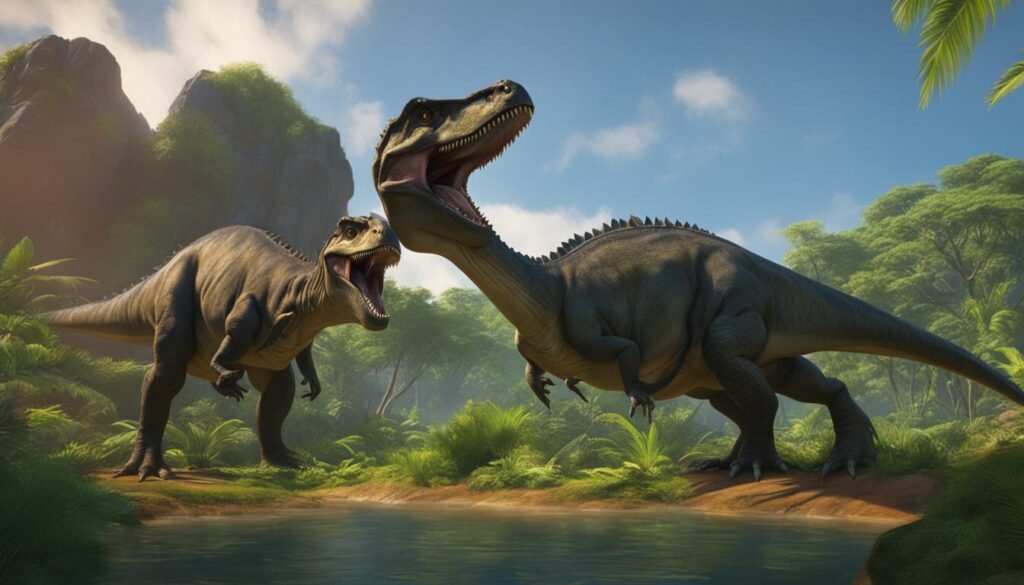
Courtship Behaviors:
- Elaborate mating dances
- Vibrant visual displays
- Territorial calls
These courtship behaviors, featuring mating dances, visual displays, and vocalizations, would have been critical for attracting mates within dinosaur populations. The presence of these behaviors in dinosaurs suggests a level of complexity and social interaction that parallels the courtship rituals observed in modern birds.
Paleontological Records: Insights into Dinosaur Courtship
Dinosaurs, like modern-day animals, had complex courtship behaviors that can be inferred from the paleontological records. These records provide valuable insights into the species attraction and courtship posturing of these ancient creatures. By studying the scrape displays, vocalizations, and displays left behind by dinosaurs, researchers can unlock the secrets of their courtship rituals and behaviors.
Scrape displays, such as those found in Colorado, offer valuable evidence of dinosaur courtship. These scrape displays were created by male dinosaurs as a way to attract mates. They likely signaled the attractiveness and suitability of the males as potential mates. The scrape displays were accompanied by other courtship behaviors, including posturing and displaying features that were desirable to potential mates. These behaviors would have contributed to the courtship rituals of dinosaurs and played a significant role in the selection of mates.
The study of paleontological records also provides insights into the courtship posturing of dinosaurs. Similar to modern-day birds, dinosaurs may have engaged in elaborate displays to attract mates. These displays could have included visual cues, such as colorful feathers or exaggerated body postures, and vocalizations, such as territorial calls. By analyzing the fossilized remains and trackways left behind by dinosaurs, researchers can piece together the courtship posturing behaviors of these ancient creatures.
| Dinosaur Courtship Behaviors | Examples |
|---|---|
| Scrape Displays | Ground scrapes created by male dinosaurs to attract mates, similar to nest scrape displays seen in modern birds. |
| Posturing | Exaggerated body postures and colorful displays to attract mates, showcasing physical attributes desirable to potential partners. |
| Vocalizations | Territorial calls and vocal displays used to communicate with potential mates and establish dominance. |
The paleontological records provide a window into the courtship rituals and behaviors of dinosaurs. By examining trace fossils, such as scrape displays, and analyzing the physical attributes and behaviors of these ancient creatures, researchers can gain a deeper understanding of how dinosaurs attracted mates and engaged in courtship posturing. These insights offer a fascinating glimpse into the world of dinosaur courtship and contribute to our broader understanding of their evolutionary biology.
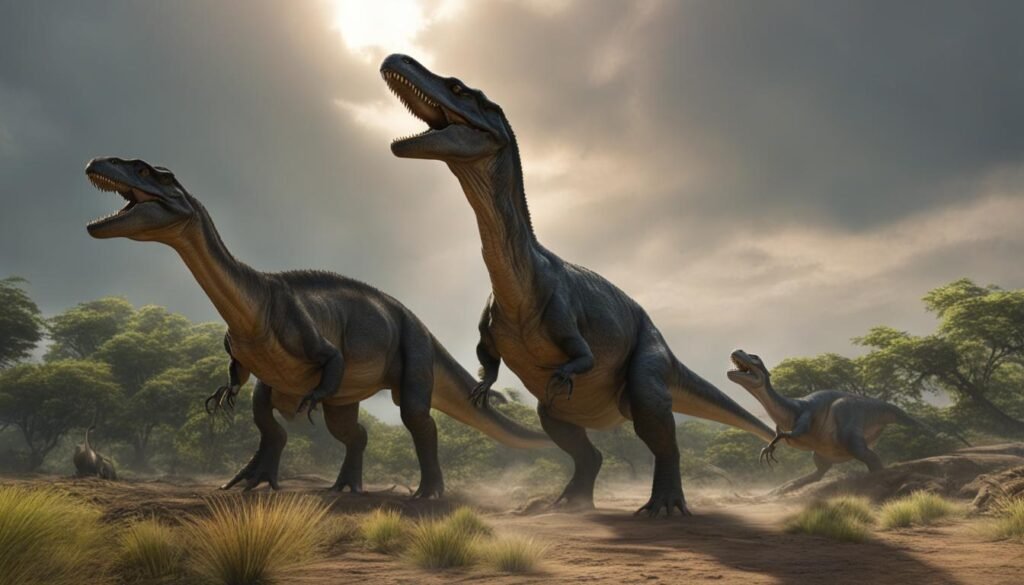
Dinosaur Courtship: A Dance of Attraction
The courtship behaviors of dinosaurs involved a complex interplay of species attraction and courtship posturing. Through scrape displays, posturing, and vocalizations, these ancient creatures communicated their suitability as mates and established dominance in their social hierarchy. The study of paleontological records continues to shed light on the intricacies of dinosaur courtship, providing a captivating window into the past.
Breeding Season and Sexual Dimorphism
Dinosaurs, like modern-day animals, likely had a defined breeding season when their courtship behaviors were at their peak. During this time, they would engage in ritualized displays, vocalizations, and other courtship behaviors to attract mates. The breeding season would have been a crucial period for dinosaurs to find suitable partners and ensure the continuation of their species.
One fascinating aspect of dinosaur courtship rituals is sexual dimorphism, where males and females have distinct physical differences. This phenomenon is observed in many animal species and could have played a significant role in dinosaur courtship. For example, males with more elaborate display features, such as vibrant colors or larger crests, may have been more attractive to females. These physical traits would have served as visual signals of fitness and genetic superiority, making the males stand out among potential mates.
To better understand the breeding season and sexual dimorphism in dinosaurs, paleontologists analyze fossil records and compare anatomical features between male and female dinosaurs of the same species. By studying the bones and other remains, researchers can identify differences in size, ornamentation, or other characteristics that suggest sexual dimorphism. This information helps paint a clearer picture of how dinosaurs courted each other and the role that physical appearance played in mate selection.
| Dinosaur Species | Males | Females |
|---|---|---|
| Tyrannosaurus rex | Large size, robust build, well-developed crests | Smaller size, more streamlined shape |
| Stegosaurus | Spiked tail, larger plates on the back | Smaller plates, no spiked tail |
| Triceratops | Larger horns, frill with elaborate patterns | Smaller horns, simpler frill |
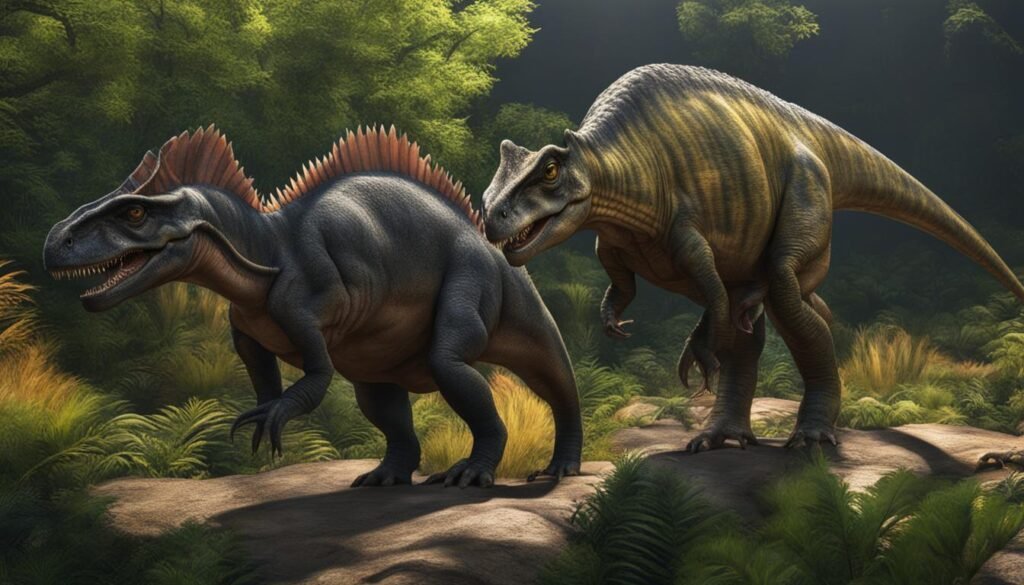
While the exact nature of ritualized displays and their role in dinosaur courtship is still a subject of ongoing research, the evidence suggests that dinosaurs had complex behaviors and adaptations related to breeding. The combination of breeding seasons, ritualized displays, vocalizations, and sexual dimorphism would have made dinosaur courtship a visually impressive and fascinating process.
Conclusion
The study of dinosaur mating rituals and courtship behaviors has provided valuable insight into the evolutionary biology and social dynamics of these ancient creatures. Through the analysis of trace fossils and paleontological records, researchers have discovered fascinating evidence of nesting sites, social interactions, reproductive signals, and mate competition among dinosaurs.
The presence of scrape displays in Colorado suggests that dinosaurs engaged in nest building and territorial displays as part of their courtship behaviors. These scrape displays, along with vocalizations and visual displays, would have made the courtship rituals of dinosaurs quite energetic and visually striking, similar to the behaviors seen in modern birds.
Furthermore, the existence of a defined breeding season and potential sexual dimorphism in dinosaurs indicates the importance of mate competition and attracting a suitable mate. Males with more elaborate display features may have been more attractive to females, contributing to the evolution of sexual dimorphism within dinosaur species.
Continued research and analysis of paleontological records will undoubtedly deepen our understanding of dinosaur courtship rituals and behaviors. By unraveling the mysteries of the past, we gain a clearer picture of how dinosaurs navigated the complex world of reproduction and social dynamics.

